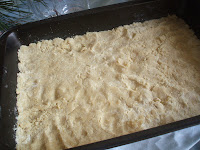Boswell Chili
Ingredients
2 bell peppers
2 15oz or so cans of beans, whatever kind tickles your fancy
1 32oz/28oz/whatever big variety of can diced tomatoes
1 onion
5 cloves of garlic
10oz package frozen sweet corn, about 1 1/4 cups
1/3 or so of a thai pepper or as much as you like of another spicy variety
160z broth of some kind. I made my own from some leftover broccoli stems and scallions and the husks of onions and garlic I chopped for this meal. Pretty straightforward, just cut everything up, saute it in butter on medium or so heat to soften and release flavor, but don't let anything brown or cook too much, then cover in water and boil/simmer for 45 minutes - an hour. Instant veggie broth. Just be sure to drain it and toss the solids, they're kind of gross.
2 Tablespoons chili powder
1 teaspoon oregano
1 teaspoon cumin
1 Tablespoon salt
olive oil
Supplies
Large pot
Cutting board
Knife
Wooden spoon
Tuneage
Minnesota Public Radio! They had some sweet harp music on the air at cooking time.
1. Cut things - dice your onion, cut out the stems of the peppers and cut everything into nice little chunks, 1/4-1/2". Mince the garlic and spicy pepper. SAFETY WARNING: always wash your hands after you cut spicy peppers, *especially* if you are male and plan on going to the bathroom. There are certain things that are OK to visit a man's secret regions, chili oil is not one of them.
2. First saute - drop some olive oil into your large pot - a couple tablespoons, maybe? I never measure oil. Just put enough so that whatever you're frying doesn't burn, but not so much that everything gets soggy and greasy. Heat it up to just above medium and throw in all your sauteables - the onion, peppers, and garlic, and this is when you cook your meat, too, if you're eating omnivorously. Cook this until the onions are translucent, stirring well to keep things from sticking to the bottom.
3. Add and stew - throw in the tomatoes, corn, beans, broth, and spices - the salt, cumin, and chili powder. You don't have to be exact with the cumin and chili powder. I usually add a little more. This most recent recipe was blessed by fate and my approximate heapings turned out to be exactly right. Let this boil first, then reduce down to a gentle simmer and let it go for at least 45 minutes, preferably and hour and a quarter. Don't cook it so much that the peppers get really mushy. I have never had this happen but I believe it to be theoretically possible.
And you're done! Taste it at the end to make sure it's good. If it's not flavorful enough, add more salt and/or oregano; if it needs more of a kick, add chili powder; if it's too thin or needs fortification add some cumin. Dress it with grated cheddar. My dad puts cilantro on it and while I like cilantro, too, they didn't have it in Ireland so I never remember to get it.
Peace, love, chili!










































